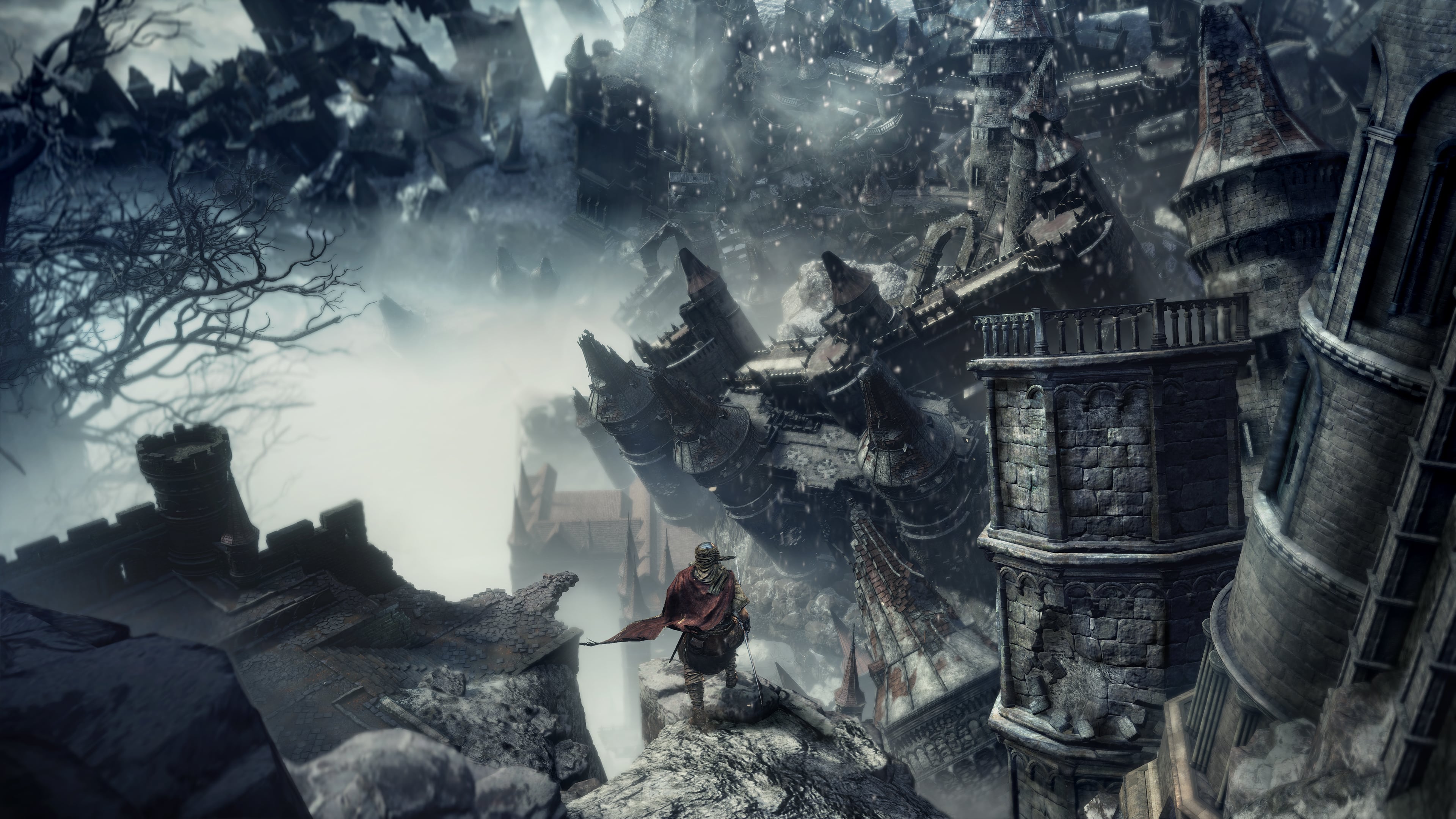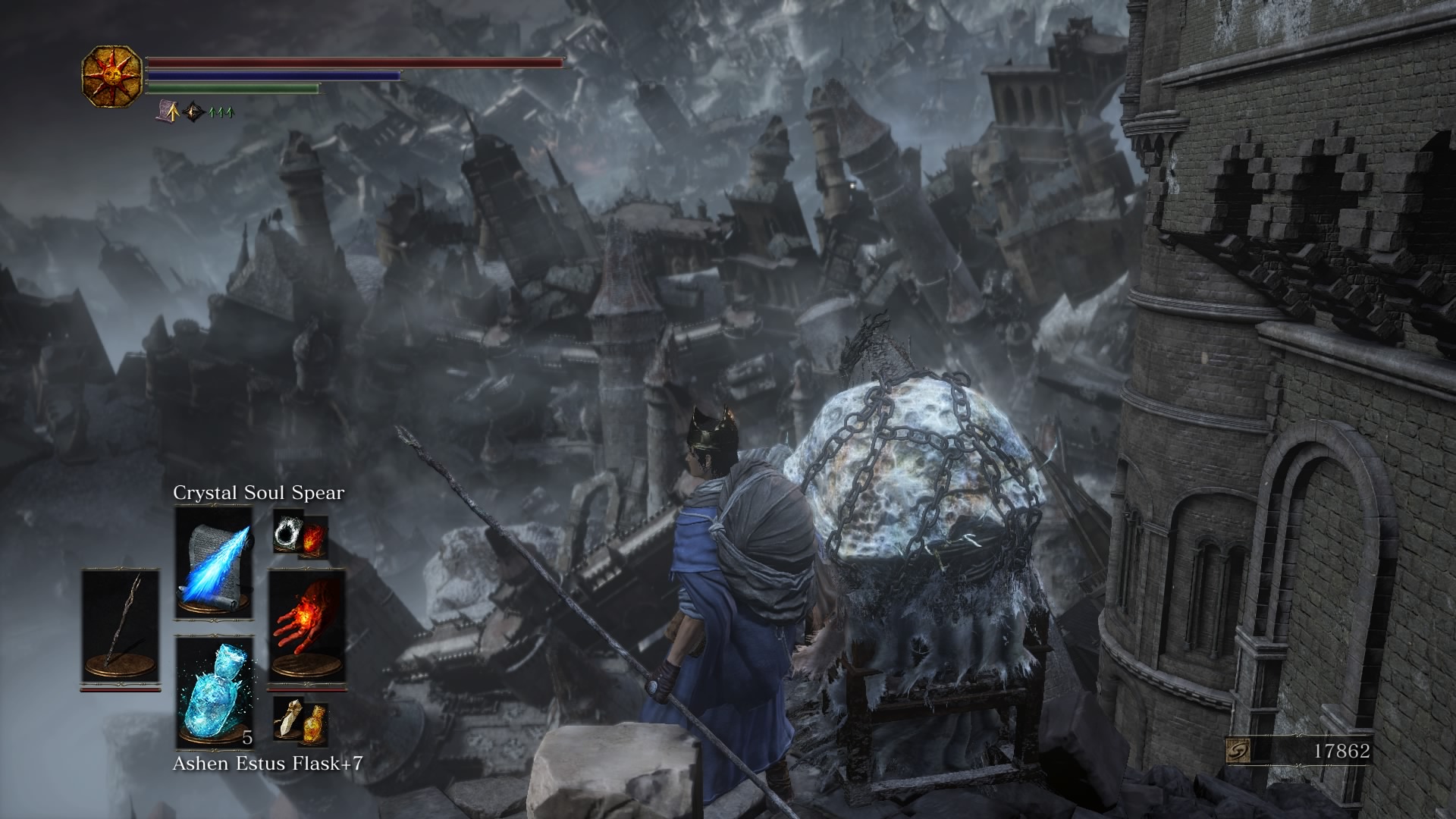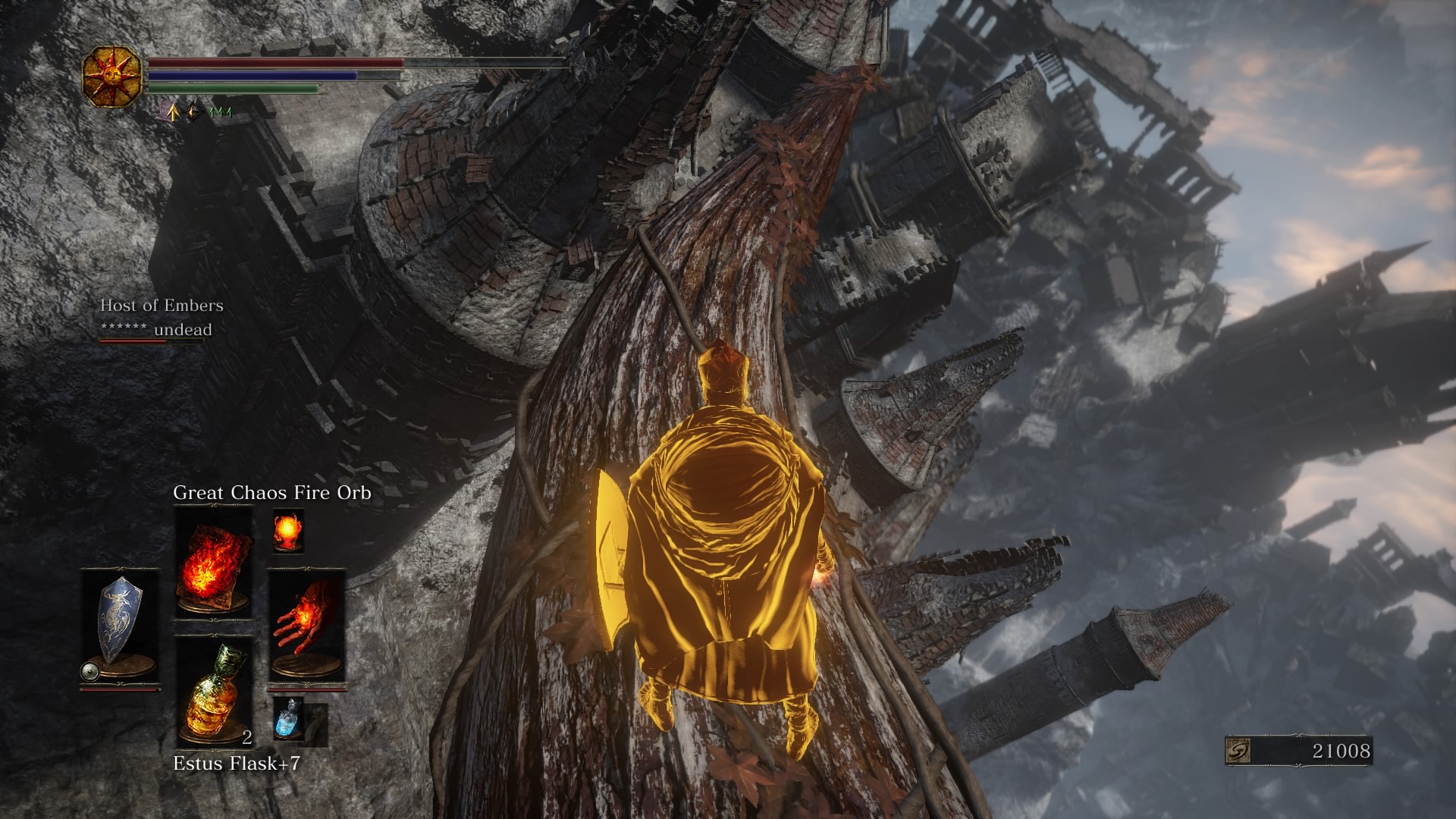Why I love Dark Souls 3: The Ringed City's brilliantly incongruous architecture
And why it's a fitting send off for the series.


In Why I Love, PC Gamer writers pick an aspect of PC gaming that they love and write about why it's brilliant. Today, Joe enjoys the view from Dark Souls 3's southernmost point.
There's a feeling I get whenever I fire up a Souls game for the first time that no other videogame gives me. It's a lovely gut-wrenching blend of excitement, fear and anxiety wrought by the thought of exploring new fantastical and awe-inspiring locales—all the while knowing I'll be stalked by whichever grotesque entourage of monstrosities Hidetaka Miyazaki has dreamt up this time along the way. Last night I started Dark Souls 3's second and final offering of DLC and welcomed the lead butterflies back with open arms.
The Ringed City—which can only be accessed when you've offed the base game's four Lords of Cinder and have successfully powered through its previous Ashes of Ariandel add-on—is thought to be the Souls series' last ever outing. Given Ariandel somewhat failed to live up to the post-launch standards set by previous series instalments, much rests on this one's shoulders as far as closing the series is concerned.
I've only clocked a couple of hours so far, and while I've enjoyed butting heads with its new monsters—I spent an inordinate amount of time outrunning the lightning-firing angels, seriously—and its first major Demon Prince boss, the true star of the show up to this point has been its Dreg Heap and Earthen Peak Ruins settings themselves.

Setting in the Dark Souls series has been discussed almost as much as its brutally-unforgiving difficulty, its huge variety of equipment loadouts, and its fascinating open-ended lore. The original Dark Souls is a masterpiece in level design, creating a sprawling interconnected world where even the most incompatible of environments are weaved together with wonderful precision—and the absence of fast-travel teleportation until the latter stages of the game lends this fluent puzzle credibility.
Players are often forced to weigh up the pros and cons of venturing in certain directions against both their Soul Level and the enemies housed in certain areas, which only highlights how important its layout, and an understanding of such, is.
As deftly outlined by YouTube fellow Hamish Black in his series Writing On Games, part of what makes the original Dark Souls' setting so important is its ability to portray both physical in-game ascent and descent in its earlier stages as themes. Ascension, says Black, is rewarding while descending into its depths stands to illuminate how unforgiving it can be. Black even suggests the way in which the ringing of the first bell compares with game's descent into Blighttown can make or break you—that it can determine whether or not you are a Dark Souls player at all.
This claim is stretching a little too far for me, but I do agree that the way the original Souls leverages ascent and, crucially, descent as concepts and mechanics is fantastic, so much so I'm not sure Dark Souls 2 could ever have bettered it.
It didn't in my eyes, and an over-reliance on fast-travel and maps which just did not fit well together resulted in a world that feels jarring. Each arena is well designed in its own right, however too often feels detached from what preceded it. The game's Earthen Peak, for example, leads you upwards through a labyrinth of windmills and tunnels that overlook the Harvest Valley below—but when you reach the Iron Keep beyond, it's surrounding by rivers of molten lava.
The biggest gaming news, reviews and hardware deals
Keep up to date with the most important stories and the best deals, as picked by the PC Gamer team.
Dark Souls 3, with Miyazaki back in charge, goes a long way to restoring this sense of cartographic wonder—with destinations that compliment its lore and again play with the ascent/decent idea—dragging players seamlessly from the Profaned Capital to Anor Londo; from Farron Keep to Archdragon Peak and everywhere else along the way.
Within a universe that operates in cycles, where history is bound to repeat and reinterpret itself, what I've played so far of The Ringed City is a masterstroke in underscoring the end of the line. We're thrust into the "mangled remnants from every age and every land", as it steers us ever-downward into a world folding in on itself. Looking at it, nothing makes sense but, as it depicts remnants of individual past worlds all forced together, why should it?

Now, we've gone beyond anything we've ever known. And where the Kiln of the First Flame was once recognised as the end of the line, it instead marks the peak of where we are now. The MC Escher-like backdrops of the Dreg Heap depict worlds long-forgotten as we make our way towards the lowest point of the Souls universe, and their impossible architecture and perspective serve to accentuate how absurd and futile each passing journey towards linking the flame really is.
This is the ultimate descent and, despite only being accessible once you've finished everything else, this DLC is as unforgiving as it gets. Even beyond the angels which spew incessant showers of lightning or curse magic from above, the swamp-dwelling and brutally-strong Harald Legion Knights, or the three-tiered Demon boss fights, the world itself is designed in such a way that it's an absolute slog shuttling successfully between its bonfires. This may be the Souls series' last outing but it's going down swinging. And despite its difficulty, it's blooming gorgeous.
I may only two or so hours in, but I've fallen in love with The Dreg Heap already and am bound for The Ringed City next. I guess this is my last chance to Git Gud, as they say, but, if history really is doomed to repeat itself in the Souls world, I reckon I've got a few more trips to the bonfire left in me yet.


